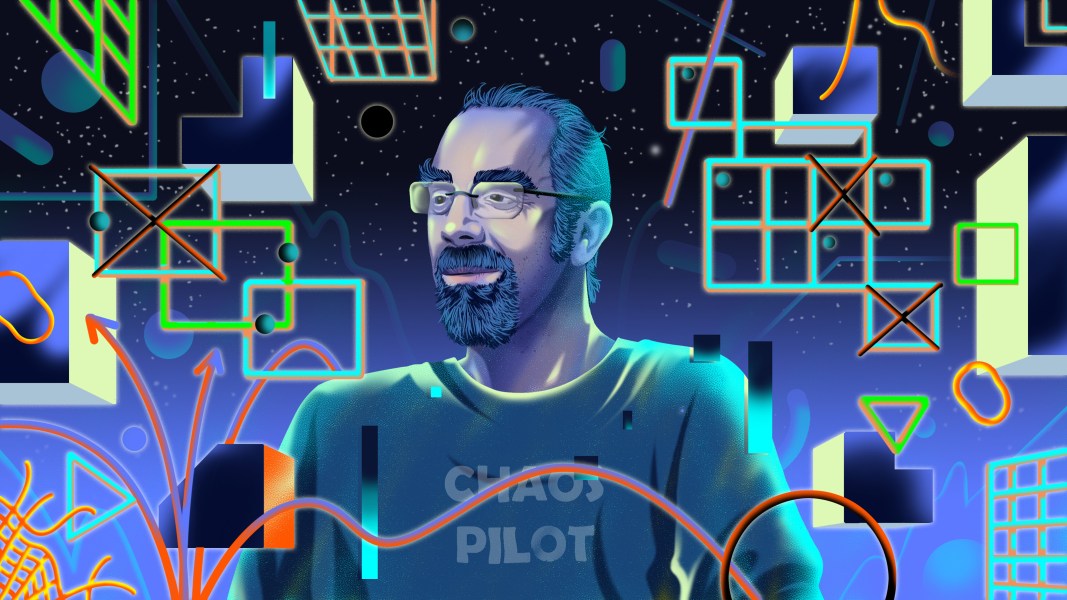Great leaders know when to deploy the 3 types of innovation

- Innovation is not invention — for an invention to become an innovation, someone’s behavior must change relative to that invention.
- When seen through the lens of demand, innovation falls into three discernible categories: informative, transformative and formative.
- Companies can benefit by taking a systemic approach to thinking about innovation and demand.
During my four-decade career at IBM, where I most recently served as the Chief Technology Officer for IBM Cloud, we faced several challenges requiring innovative solutions. I didn’t realize it then, but experience shows us that there are patterns to innovation that need to be teased out and differentiated. Looking back, differentiating these patterns is key to managing the challenges that manifest when innovating. It doesn’t matter if you are in a small or large organization; these situational challenges are endemic.
Part of why it’s not obvious to us nor well understood yet is that the myriad of books that talk about innovation make incomplete assumptions about all the elements involved. Innovation is NOT invention. Too many people confuse or align the two. Invention usually requires a deep understanding of a particular subject or connected subjects and results in deep, new, original insights. On the other hand, innovation requires a deep understanding of individual and/or group behaviors where inventions may or may not change a desired behavior. For an invention to become an innovation, someone’s behavior must change relative to that invention. Look at the contrast between the invention of the Apple Newton in the late ‘80s and early ‘90s and the eventual introduction of the iPhone over a decade later. Both were significant inventions, but only the iPhone hung around and fundamentally changed the behavior of millions to billions.

At the core of the difference is a deep understanding of demand, which is a concept that has not been effectively studied when discussing innovation. Too many innovations fail or take a long time to manifest because of that lack of understanding. Furthermore, when seen through the demand lens, innovation falls into three discernible categories.
#1. Informative innovation
The first category is “informative,” and it occurs when improving an existing business, aiming for greater consolidation or penetration into an existing market. This happens most often and only requires a little, if any, rethinking of business models or go-to-market strategy. Some simple examples are the continual improvement of cameras on cell phones or bandwidth capacity in networks and/or Wi-Fi. Another is the continual improvement of range in EVs stemming from improvements in battery technology or understanding of aerodynamics.
These are far from easy and require invention along the way. However, the usage/business models have been established, and target markets and demand are already understood. This type of innovation can depend heavily on pure invention because the desired behaviors are already well understood.
#2. Transformative innovation
The second type, known as “transformative,” is where the market has moved on you in ways you may or may not understand, but you are busily trying to sort it out and make shifts in product design to match the modified needs. Generally, you are selling to the same or similar audience with needs in the same direction, but some of the base assumptions have shifted.
Many of the shifts in the delivery of business software to the internet or mobile internet channels were of that nature. The core function/need hadn’t changed, but the way in which it was delivered drives many businesses to distraction. Even worse, the skill sets necessary and the shift in design may force an organization to rethink almost everything.
In many ways, this can be the most difficult type of innovation since you not only have to figure out new assumptions but also have to overcome internal resistance to shifting skill needs. People get very nervous when they have been successful but now must relearn or shift skill sets. Fear creeps in and drives ‘destructive’ compliance and cynicism.
Understanding shifts in demand in depth can be crucial to overcoming the natural pushbacks and shifting the organization in the right way — to say it’s not easy is an understatement.
#3. Formative innovation
That leads us to the third and most intriguing form of innovation, “formative.” This is the land of brand-new explorations. This is where innovations can come out of left field and redefine an entire space. We are going through this now with Machine Learning and Generative AI. It’s a brand-new set of tools that seems to be reshaping how we accomplish many tasks. We also went through this not that long ago with ‘cloud’ and cloud-based businesses.
It’s safe to say that, with AI, many new businesses are emerging, but demand is still anything but clear. There’s lots of imagined demand, but we have yet to see dramatic shifts in what we refer to in the book as ‘authentic’ demand. Clearly, authentic demand emerged and exploded with cloud services. Nevertheless, there is no stopping the drive to find that ‘authentic’ demand for this generation of AI tools.
Creating new businesses in this space (internal or external) is a real challenge in demand AND subsequent execution. Quite often, it requires starting or restarting with a blank sheet of paper. Everything from design through to ‘go-to-market’ needs to be rethought or originated.
A systemic approach
As a business leader, I have experienced all three types of innovation. The first, informative innovation, is what most of us do on a day-to-day basis, no matter what business we are in. We all manage and push businesses to evolve to fit customer wants and needs in our established markets.
As challenging as that can be, I found the greatest challenges are in the latter two innovation types (transformative and formative). Not just because of the inherent issues in transforming or creating but more because I never understood, nor even considered, the difference between the three types.
Informative innovation benefits more from classic management principles applied to the successful evolution of an existing business. There is no real need to rethink assumptions about demand and target markets. One way to think about this is to consider that there is no need to change HOW you are WHO you are. You need to push hard on it.
Transformative innovation often requires changing basic skills internally to meet a shifting demand externally.
Transformative innovation often requires changing basic skills internally to meet a shifting demand externally. The pressure usually comes from that demand shifting for your customers as well. At IBM, for decades, we were in the business of delivering software for managing online transactions to banks, insurance, and many other industries when the craze to enable commerce on the internet hit and hit hard. Our customers demanded a quick set of solutions to ‘modernize’ their existing systems to meet that need. More than invention, it required us to rethink our entire technology base WITHOUT losing our core understanding of that base. It required new skills to be developed and new systems to be created. In other words, we needed to alter HOW we were WHO we were.
Not only did much of the organization not react well, but it created internal fights over how the demand was changing. Had we had a clearer, testable view of understanding demand, we could have moved to a single solution with greater efficiency and less rancor and confusion. As it was, we eventually succeeded and created a massive business transformation.
Another not-so-successful story came as the result of the transition to Cloud and Cloud-based solutions. As we look back, this was a formative shift in the business. Generally, formative entails something coming out of left field that requires you to rethink everything, from core engineering (in our case) to go-to-market. Through in-depth study, we managed to ‘understand’ what was happening, and we tried to react by creating a new division within the business. It didn’t work.
Had we understood the nature of the shift fully as a formative one, we would have created a spin-off with a brand-new approach to all aspects of the business. There would have been no guarantee of success, of course. But instead of struggling to bend the unbendable, we could have focused on the task at hand and maybe stood a chance, as IBM had done previously with the PC business in the early 1980s.
When I describe it this way to former colleagues, it becomes less an exercise in ‘Monday morning quarterbacking’ and more a systemic approach to thinking about innovation and demand.





